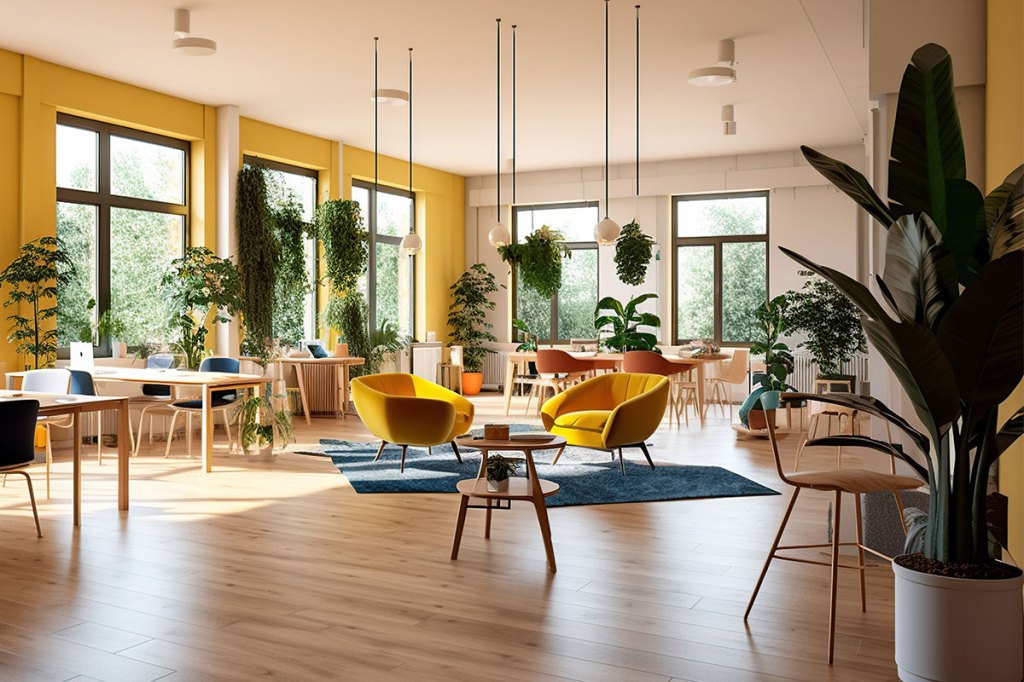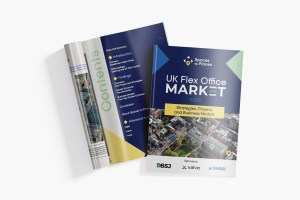Is the Traditional Office Dead: What Does the Future of the Office Look Like?
The future of the office as we know it is still unclear. With some businesses such as HSBC wanting to reduce its global office space by 40% due to hybrid working and cost-cutting and others, such as JPMorgan, Apple and Google, mandating a return to the office – what does this mean for commercial real estate? The Unispace Global Workplace Insights report, Returning for Good, surveyed 14 industries and 17 countries worldwide and found that 51% of workers globally are reluctant to return to the office, down from 64% in the 2021 report. Based on the survey, “hybrid is the most common model for firms globally, with 50% of the workforce indicating that they are in the office four or more days, with a weekly average of three and a half days.”

The report found that the relationship employees have with the office has changed as people prefer to complete collaborative work in the office and individual, focus or admin work at home – but they need a specific reason to go to the office. As Andrew Mawson, managing director of workplace consultancy AWA states in the Guardian article, “HSBC is showing foresight by using the move to hybrid working to allow it to have a smaller, greener, more flexible headquarters that is more convenient for employees.”
The traditional office is not dead, it’s evolving. Real estate has traditionally been driven by asset class and the industry has built its business model around the different streams such as residential, offices, or retail. But now, it’s not that simple. Now we can look at a building and see what the best option is, which is far more likely to be a combination. The building of the future as Yardi sees it includes commercial, residential and coworking under one roof.
The real estate industry is already seeing a surge of diverse portfolios to help reduce risk and improve their return on investment – especially after the effects of the pandemic hit specific real estate verticals more than others. So, if you want to grow your economy and real estate investments, you must have a diverse selection of real estate within your portfolio.
Flexible office space offers businesses multiple benefits, including short-term leases and the ability to scale up or down as needed. By having more options available for flexible workspaces and hybrid working, you can entice both businesses and workers back into the office.
The Future of Commercial Real Estate
As more businesses make the move to flexible office spaces, commercial real estate needs to evolve with it. So, where do you begin? Let’s explore the avenues available and how companies can better facilitate the in-demand, hybrid working model.
- Joint Venture – Management Contract
This popular operating model is a partnership between a landlord and a coworking or flex space operator. This is an intuitive way for property owners to utilise their asset without learning the complexities of flex space. The operator sees reduced risk of starting their location from scratch and will manage the space in exchange for a monthly management fee. - Acquisition Model
This model is great for commercial real estate companies who are experts in acquiring assets but don’t have the knowledge of the intricacies involved with flexible space management. In the case of an acquisition, the flex operator gets a large financial pay out for years of hard work and the prestige of being linked with what is often a massive corporation acquiring them.
- DIY
The do-it-yourself model is a great way for landlords to get into the industry and profit directly without a flex space operator entering their building. Expertise and advising is still required, particularly with workspace technology, offerings, branding and day-to-day operations. But as we re-enter the workplace without standard 40-hour weeks in a centralised office, the chance of a greater return is lowered.
- Lease Model
For operators who don’t own the asset, attaining a building through a traditional lease is a great way to create an independent community of coworkers who can network with each other. Operators can either seek to establish their brand in thriving urban communities where there is consistent demand for space, or in underserved areas where there is potential to build a brand-new community for members. Operators who take on this model will need multiple revenue streams to compensate for high turnover rates. And with long multi-year leases, selling short flexible memberships, margins will be tight.
Getting Started with Flex
With many options to explore, there are risks and rewards to each of these models for those seeking to expand into flex. But each of these models can be implemented successfully if done with the right expertise behind you.
Introducing flexible space into your portfolio improves brand value and attracts a more diverse tenant base. Flexible components within a traditional space, not only provides an increase in revenue per square foot, but also more options for privacy and hybrid work to draw employees.
Once your flex space strategy is established, the next step is to select the right technology and software solutions to facilitate day-to-day operations and IT infrastructure. Investing in a unified solution will streamline operations, ease the burden on staff and provide a better member experience overall.
Make The Move to Flex with Yardi
The Yardi Kube Suite provides one platform, including a member app, for everything from member management, meeting room bookings and access control to accounting, security, maintenance, IT management and procurement. It helps simplify daily operations for coworking locations and flexible workspaces.
Members want a simple and easy experience, and with Yardi Kube, you and your members can benefit from a cloud-based, all-in-one solution designed for flex space management.
See how you can automate your space with Yardi’s flexible workspace solution.
Follow Yardi Kube on LinkedIn for the latest news, customer stories and blog posts.




